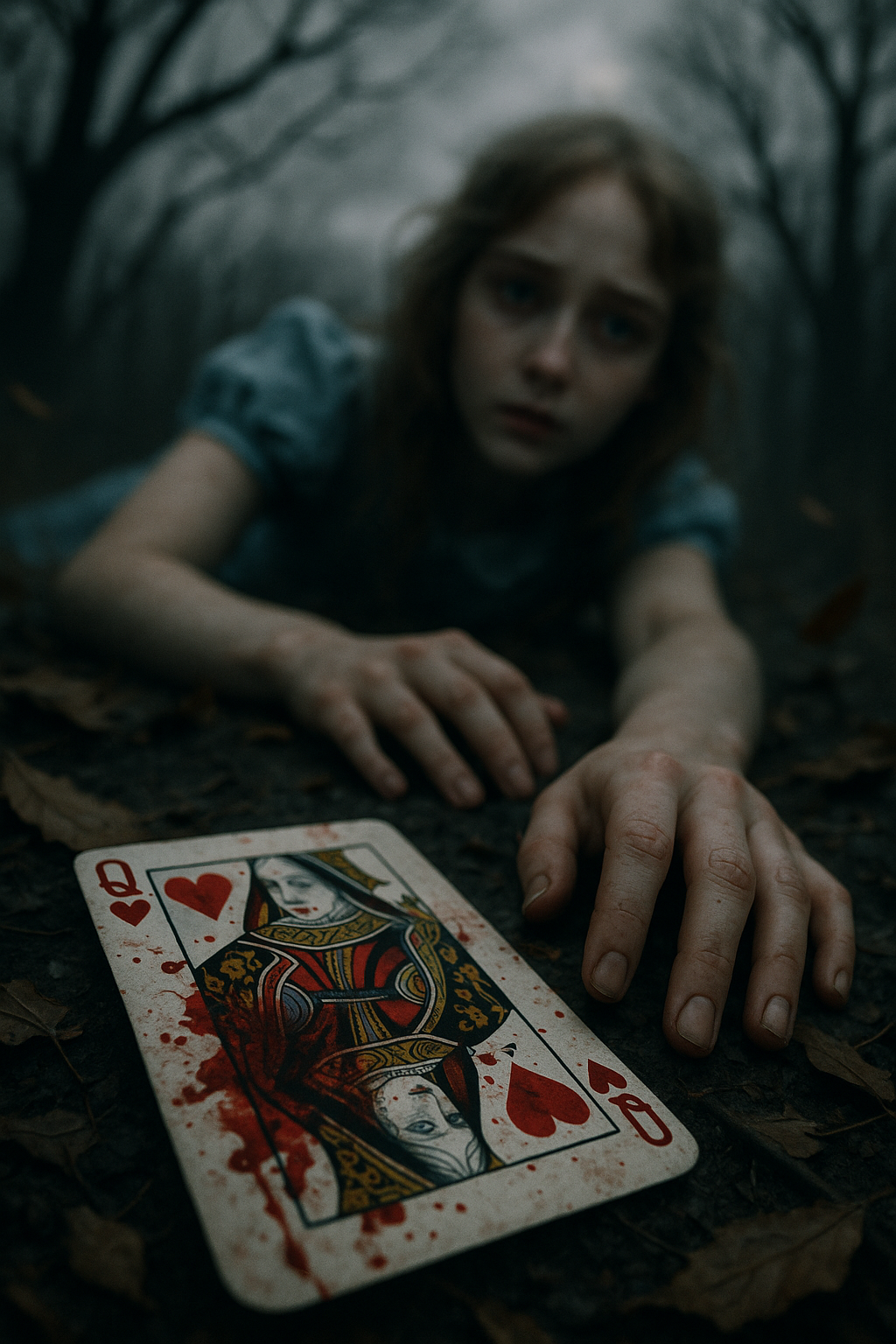Alice in Horrorland: Unlock Client Creativity Through Symbolism
“In this blog, Raymond teaches how to use symbolism tied to stories, brands, and clients to help unlock higher levels of artistry in the pursuit of commercial art.”
”He created a horrifying and visually arresting retelling of Alice in Wonderland to act as the example.”
”The post includes everything noted in the table of contents above, as well as deranged imagery, artist’s commentary, toolkit, links to socials, and information for retaining Raymond’s services.”
The Short FilmSound on recommended.
As Written“Alice in Horror Land”
By Raymond Cinemato
Alice chased a dapper white rabbit into the gaping wound of a rotting tree.
The stitched flesh of the tunnel gagged as she slid down.
Falling into its dark cavity she found furniture sewn into the ceiling and bottles clinking.
Thirsty,
she gulped from one labeled Drink Me.
Hungry,
she sliced into a cake, discovering it bled.
Before finishing, her spine bent and limbs lengthened.
Her tears of agony cracked the calloused floorboards, allowing eyeless dolls to climb through who led her to a garden where taxidermied animals sat at the Mad Hatter’s moldy table.
He offered tea from a cup rimmed with teeth.
A caterpillar made of stitched torsos asked her name and then exhaled pink smoke which caused her to drift off.
She awoke in the Queen’s croquet field and was encouraged to play games with mallets made of birds and hedgehogs that cried from cages.
Alice refused, so she was taken by card soldiers to court.
At trial, the queen didn’t like what she said so she had Alice’s lips stitched shut.
But then Alice began growing larger, causing the threads to tear.
She shouted, “you’re nothing but a pack of cards!”
She awoke beneath a gray sky. A blood-stained card fell from her fingers.
She thought she might not chase anymore dreams,
then looked to the blood on the queen of hearts and wondered if the dream would chase her.”
Key ImageryArtistic Commentary“Genre-Bending for Brands: How Symbolic Motion Can Unlock Client Creativity”
By Raymond Cinemato
If you work in commercial video or visual storytelling, this article will show you how to take your client’s rigid symbols—their logos, colors, mascots, slogans—and use them to create cinematic, emotionally resonant stories that transcend cliché.
Most clients don’t speak in story structure. They come with brands, marks, and mission statements. Your job is to translate those symbols into narrative—and to do it in a way that captures audience attention, elevates perception, and drives emotional engagement.
But how do you do that?
By understanding symbolic motion—how a symbol’s meaning can evolve across genre—and how you can twist it into unexpected emotional territory without breaking its integrity.
That’s what this article teaches you. And to show you, we’re going to twist Alice in Wonderland into horror.
The Technique:
Symbol ➝ Motif ➝ Genre Twist
Here’s the core tool:
1. Start with the client’s symbol.
Let’s say it’s a flame, a checkmark, or even a personified mascot.
2. Identify the emotional and psychological themes it implies.
- Flame = transformation, danger, inspiration.
- Checkmark = completion, action, personal best.
3. Ask: what does that theme feel like in a different genre?
- Take it out of its expected home (inspiration/comedy/empowerment) and bend it into a genre that creates contrast: horror, noir, romance, tragedy.
4. Build a narrative beat where the symbol plays out in this new genre’s emotional logic.
You’re not changing the meaning of the symbol—you’re forcing it to move. That movement creates story.
- My Example: “Alice in Horrorland” -
In my short video retelling (see above), I twisted Alice in Wonderland into horror using this exact technique.
(Not suggesting horror is the genre to use with a client. It’s just a fun genre to experiment with. You can do this with any genre).
Let’s break it down:
• Original Symbol: Alice = innocence confronting absurdity, growing through reason.
• Theme: Growth, identity crisis, logic vs chaos.
• Genre Twist: What if “growth” = body horror?
Suddenly:
• The rabbit hole becomes a digestive tract (“The tunnel gagged as she slid down…”)
• The Queen stitches Alice’s lips shut, symbolizing silence and suppression.
• Alice grows, tearing those stitches—her literal and symbolic breaking of control.
Nothing about Alice’s core meaning is lost. But by reframing her growth as horrific, we invite a deeper, more visceral emotional reaction.
- Why This Matters for Commercial Artists -
Your clients have symbols loaded with meaning—but they’re often trapped in a single emotional register. “Empowerment.” “Freedom.” “Luxury.”
If you can show them how to twist those meanings through genre—not to contradict them, but to explore them more fully—you become more than a technician. You become their storyteller.
And that’s where the magic happens.
This technique helps you:
• Create unexpected narratives that still feel true to brand.
• Break through creative blocks when a brand feels too rigid.
• Elevate client trust by showing them ideas they didn’t know how to articulate.
They bring the symbols.
You bring the motion.
Together, you build story.
- Try it. -
Pick a brand you’re working with.
Name one key symbol.
What does it mean emotionally?
Now: how would that play out in a horror film? A noir? A fantasy epic?
Start twisting. Start bending.
You’re not breaking the symbol.
You’re unlocking it.
Want help applying this to a specific client project?
Contact me via the link below the creative toolkit or find my socials above with the video. — I’ll pick one and break it down with you.
Let’s push our clients’ symbols further than they ever thought possible.””
Creative Toolkit“Among the many tools I have, the following were used for this project.
- Google Docs & Drive
- Adobe Premiere
- Adobe After Effects
- Adobe Photoshop
- Sora & ChatGPT
- TikTok
- Squarespace Website
- Squarespace Emails”
To learn more about mystorytelling services









